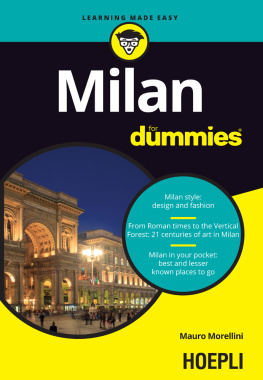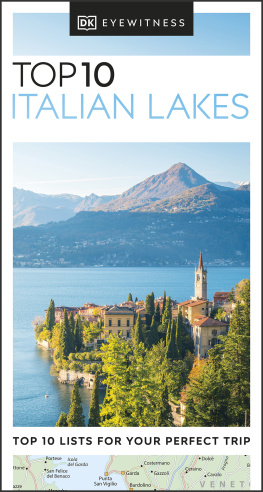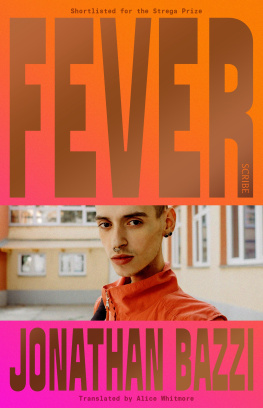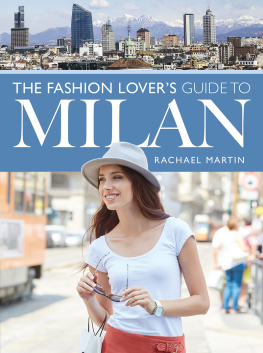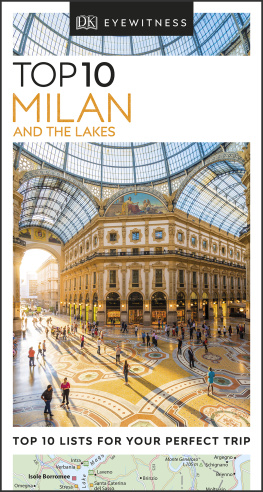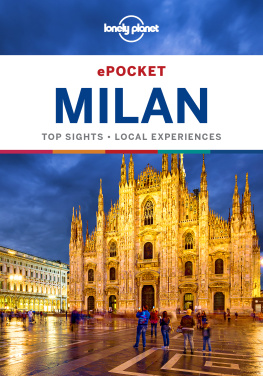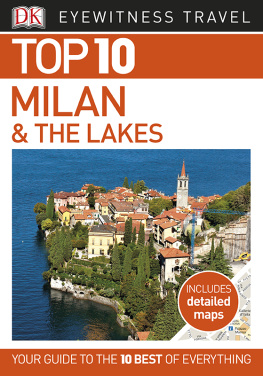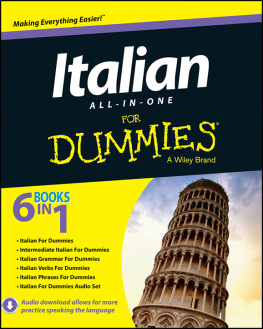Mauro Morellini has extensive experience in travel writing for magazines, journals, and book publishers. He is the author of Expo Milan 2015 for Dummies and Jubilee 2016 for Dummies (Hoepli Editore).
A quick insiders guide to one of the worlds most fashionable cities
Sitting just below the Alps on the north western side of the Padana plain, Milan is a perfect cross point between Northern Europe and the rest of the Italian peninsula. It has always been one of Italys nerve centres in terms of history and culture and, today, thanks to fashion and design, its also one of the trendiest places in the world.
IN THIS CHAPTER
The Old City
Events
Getting Around
S itting just below the Alps on the north western side of the Padana plain, Milan grew up as a city because it was the perfect stopping point between Northern Europe and the rest of the Italian peninsula. Since its first role as an outpost, Milan has always been one of Italys nerve centres in terms of history and culture, but it has also played a role in events beyond the Alps and not just in the four centuries it was ruled by the Spanish, the French and the Austrians.
Another thing that helped determine Milans location was the abundance of interconnecting waterways. The Ticino and Adda rivers flank Milan to the west and east and are the main tributaries leading to the Po river. There all also numerous streams as well as the man-made canal networks, which took several generations of hydraulic engineering expertise to build. Leonardo da Vinci was one of the more famous engineers.
Milans outer border now looks uneven and jagged, because it slowly absorbed the neighbouring villages (which mostly happened in the nineteenth century), but you can still see the city plan as a series of concentric circles. The urban structure ripples outwards from where the ancient Celtic and Roman settlements began. Todays piazza San Sepolcro was the original centre for both, (it was the ancient site of the Roman Forum) and is where youll find a tangle of muddled streets, which are often zigzagging, with no crossroad or right angle in sight! (To tell you the truth, even the Milanese suburbs dont have that many 90 crossroads.) The main roads leading out of the historical centre spread out like the spokes of a wheel, crossing over two circular ring roads. One is known as the Spanish Walls ring road, the other one is the Ramparts ring road. There is another one even closer to the centre, which is called the Medieval Canal ring road.
Only a few ruins remain from the Roman ring road now, whilst there is still quite a lot to see from the Medieval ring road, which was built at the end of the twelfth century. The gates in the Spanish walls, which were built in the middle of the fifth century, are still very commanding today and the Roman Gate, the Venetian Gate, the New Gate and the Ticinese Gate have become landmarks to guide you around the city. Many of them were still in use until they were restored during the 18th and 19th centuries, and became monuments. This all happened when the new Italian state demolished Milans city walls (as well as other citys walls), having deemed them unnecessary. Because of the almost circular map made of concentric circles, with its maze of little streets in the centre, youll sometimes hear the Milanese using clock references to indicate where something is in a neighbourhood: for example, the Roman gate area is at five o clock, or East-southeast; Piazzale Loreto is at one o clock or North-northeast.

DATES TO REMEMBER
6th century B.C. A celtic tribe from the Insubri founded the small village of Medhelan in an area well served by rivers and natural springs.
222 B.C. Medhelan is conquered by the Romans it is renamed Mediolanum by Tito Livio (meaning half way plain).
286 A.D. Milan becomes the capital of the Western Roman Empire. In 313 the edict of Constantine is drawn up, an agreement that acknowledges and supports Christianity throughout the whole empire.
6th century. The gothic war, siege and destruction of Milan.
1100-1200 Milan is a free municipality, in opposition to the empire. It joins the Lombardy League in 1176, battling against the Sacred Roman Emperor, Federico Barbarossa, in Legnano (about 30 kilometres out of Milan)
1300-1500 Lordship then Dukedom, first under Visconti and then under Sforza rule.
1535-1714 Milan ends up under the rule of the Spanish Empire.
1714 Austrian rule begins.
1797-1811 Capital of Napoleons Italy, Milan becomes the central point of Italian Enlightenment and the first industrialisation.
1848 The 5-day revolt (18-22 March) against the Austrians marks the initials signs of the first war of independence.
1861 With the birth of the Kingdom of Italy, Milan establishes itself as one of the major industrial production centres, building up the so-called industrial triangle with Turin and Genova.
1910-20 Becomes the intellectual centre of Futurism.
1923 Milan absorbs 11 hinterland towns, amongst which are Lambrate, Affori, Crescenzago, Greco and Gorla-Precotta, Niguarda and Vigentino.
1945. At the end of the Second World War on the 29th April, the bodies of Benito Mussolini and Clara Petacci, who had been captured and executed whilst they were escaping towards Switzerland, are publicly shown in Piazzale Loreto. 15 executed partisans were on show there as well.
1950-60 Milan begins to be known throughout the world for its designers and stylists.
1968. Milan universities become active centres of student uprising. The following year, Don Luigi Giussano starts the catholic collective movement for Communion and Liberation.
1969 A bomb explosion in the National Bank of Agriculture in Piazza Fontana kills 16 people and wounds many others. Even if the massacre is found to be the result of the fascist matrix, the initial direction of investigation sees Pietro Valpreda and Giuseppe Pinelli arrested and Pinellis mysterious death soon after.
1970s Milan becomes the stage for more clashes in the years of lead and some of worst acts of terrorism follow, like the killing of commissioner Luigi Calabresi and journalist Walter Tobagi.
1990s After the sparkling 80s, which earned Milan the nickname Milans to Drink after a memorable advert, the Police started the clean hands inquest, which unearthed the so-called Tangentopoli, a corrupt system that involved politicians, businessmen and crime.
2015 Milan hosts the World Fair, (Expo) for the second time, with the relevant theme of Feed the planet, Energy for life! (It hosted for the first time in 1906)
January
Milan Mens Fashion Week (www.milanomodauomo.it)
White (www.whiteshow.it)
February
Carnival
Milan Clown Festival (www.milanoclownfestival.it)
Chinese New Year
Milan Womens Fashion Week (www.milanomodadonna.it)
March
Museocity (www.museocitymilano.it)
April
The Furniture Show (www.salonemilano.it)
Fuori Salone (www.fuorisalone.it)
Milan Design Week (www.milanodesignweek.org)
Milan Art Week
Milan Marathon (www.milanomarathon.it)
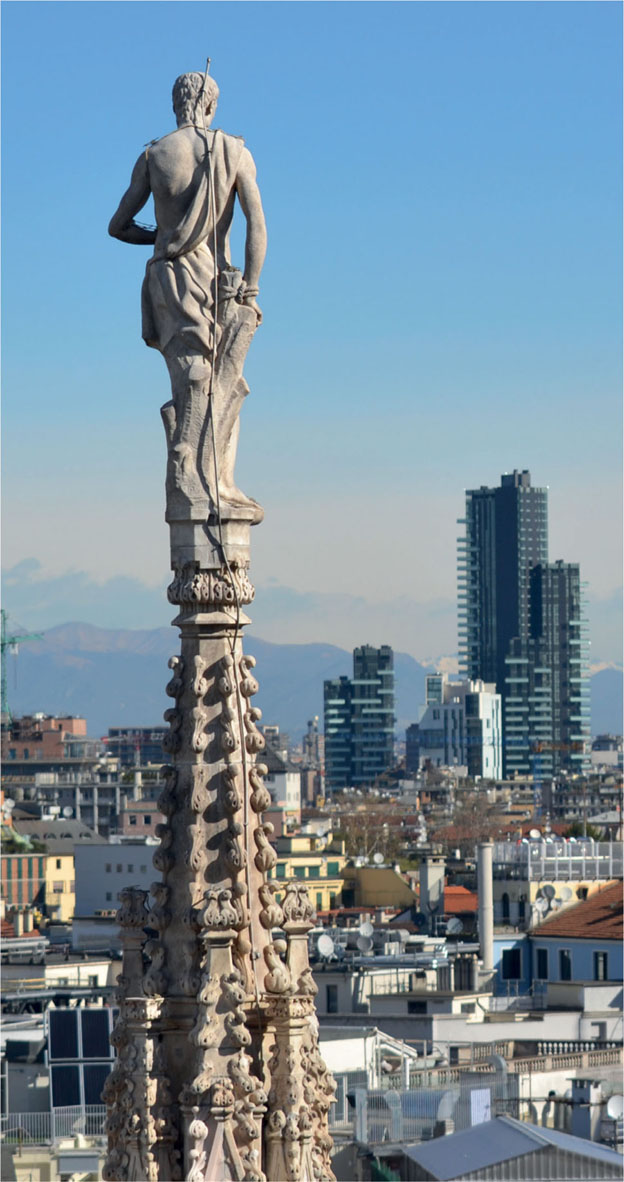
FIGURE 1.1 The figures on the Duomo spiers have watched the city grow

Next page
